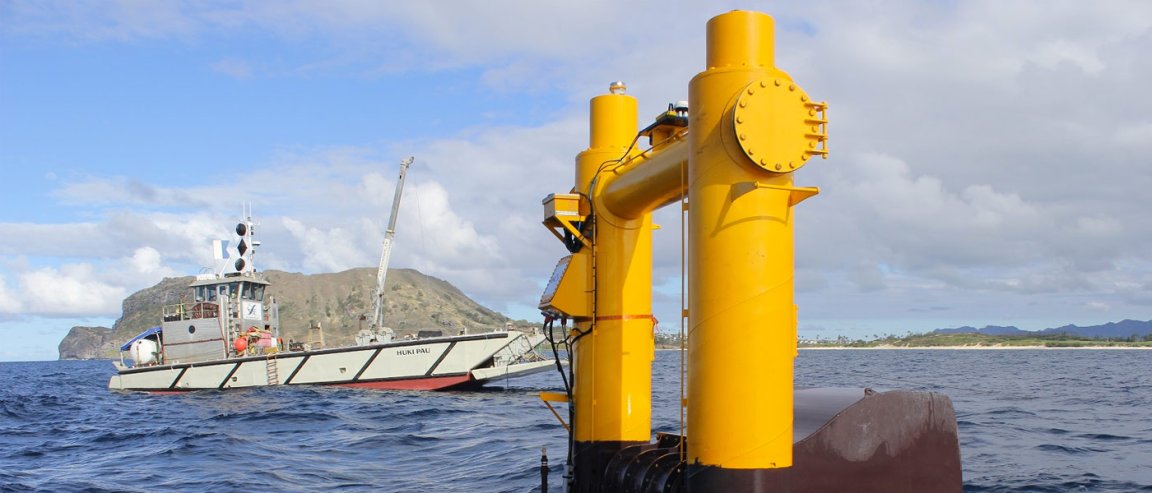
Two Buoys, One Goal
Albeit a younger technology, tidal wave energy generation is a prospective source of endlessly renewable power. Much of the world is involved in maturing this technology, including countries in Europe and even China, but the US does not have much of a presence in this emerging field.
That may be changing, however, as the country’s first wave-powered generators just went online off the coast of Hawaii this week.
Two state-of-the-art buoys have been deployed off the coast, generating a combined total of roughly 22 kilowatts of energy. Though a small start, Jose Zayas, a director of the Wind and Water Power Technologies Office at the U.S. Department of Energy, estimated that 20 to 28 percent of the U.S.’s power needs could be supplied by wave power.
The two buoys are being developed by two different companies.
The Oregon-based Northwest Energy Innovations built Azura in a collaboration with the Navy. Standing 3.6 meters (12 feet) above the surface and extending 15.2 meters (50 feet) below, the buoy is producing 18 kilowatts, with plans to scale up to 500 kilowatts. It is powered by the waves’ vertical and horizontal movements.
Meanwhile, the Norwegian company Fred. Olsen operates Lifesaver, a 15.2-meter (50-foot) wide, doughnut-shaped device. Sea movements wobble the buoy, causing movement in cables attached to the ocean floor, which then turn a generator’s wheels. This method produces about 4 kilowatts of energy.

Riding The Wave To Cleaner Air
This is all part of a new push by the U.S. to get into the wave energy game. The total U.S. expenditure on wave energy over the past decade is $334 million, and it just gave more than $20 million to 10 organizations with wave and tidal energy projects.
It is projects like this, along with the vigorous push by the private sector in making solar and wind energy work, that will allow America to meet its pledge of reducing carbon emissions by 26 percent by the year 2025.